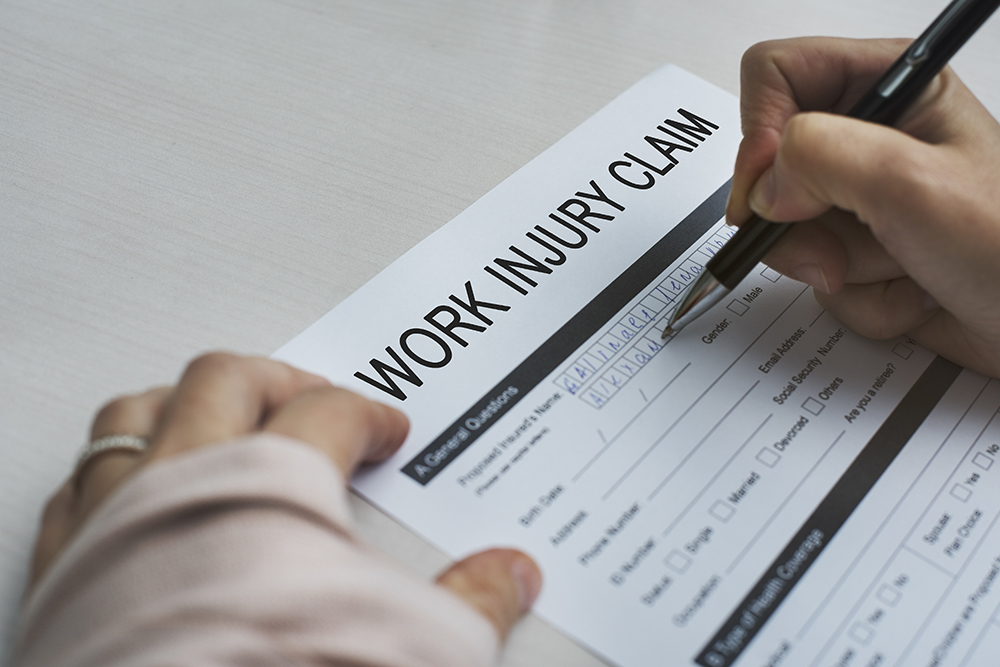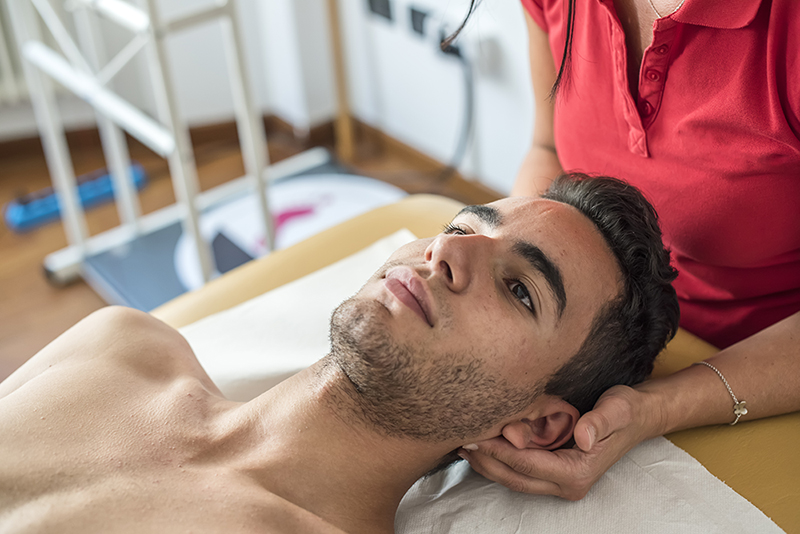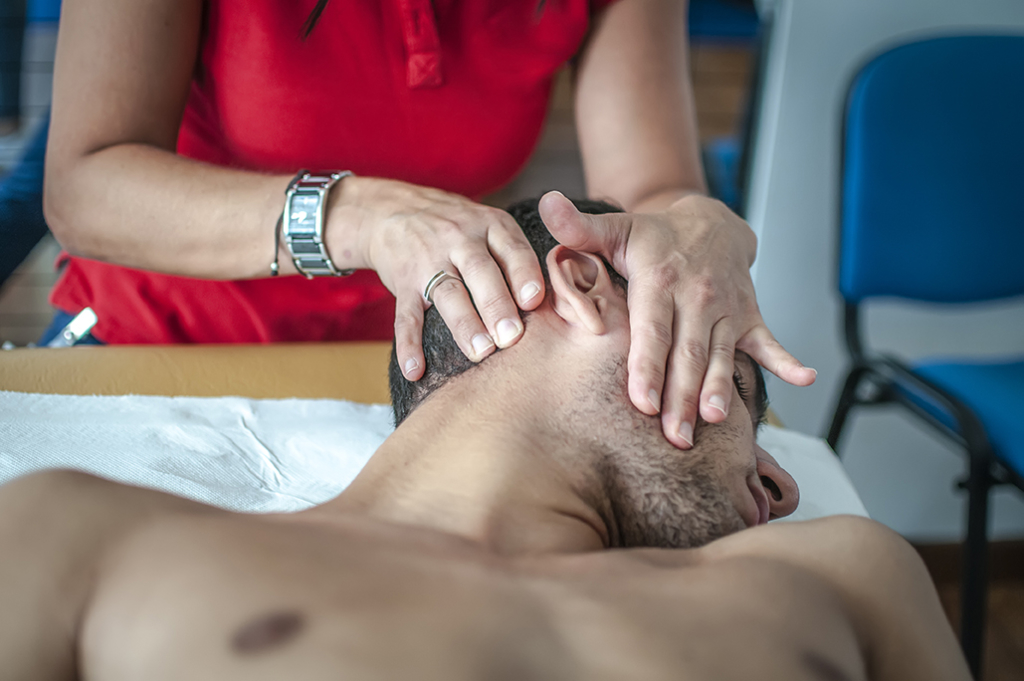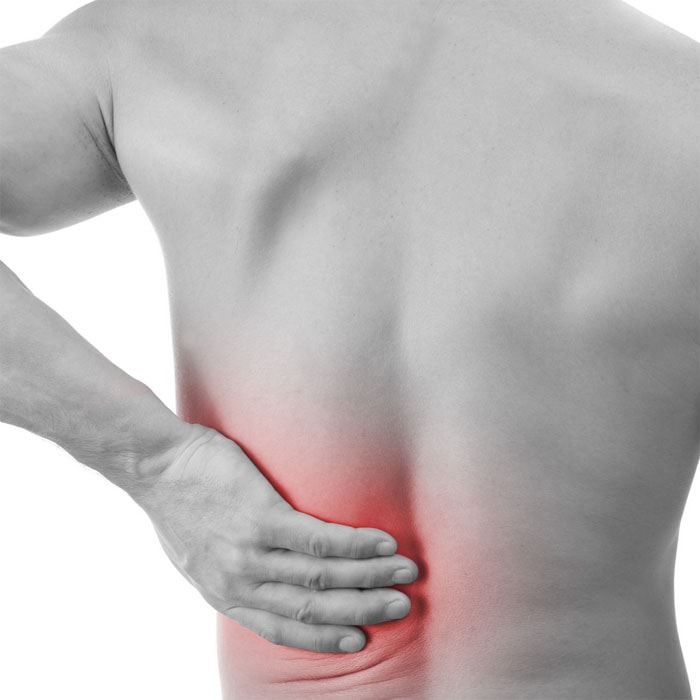-Conditions-
AUTO INJURIES

SPORTS INJURIES

INJURIES IN COMPETITIVE ATHLETES
Many professional and competitive athletes already know the value of regular chiropractic care. Increased flexibility, increased energy, increased speed, and increased performance as well as a decrease in injuries are all benefits of chiropractic care.
In fact, it’s becoming rare to find a professional or amateur sports team that does not have a “team” chiropractor. Take for instance the bay area in Northern California. The San Francisco 49ers, San Francisco Giants, and the San Jose Sharks have their own team chiropractor.
INJURIES IN CHILD AND TEEN ATHLETES
Sports and regular physical activities not only serve as a fun time for children and teens, but more importantly, it improves their overall health and wellness status while promoting a healthy lifestyle that they can carry on into their adulthood years.
Exercise and Health Education Cut Kids’ Risk of Heart Disease
Experts Urge Children Need More Exercise
Results of Strength Training in Obese Prepubertal Girls
WORK INJURIES

COMMON WORK-RELATED MUSCULOSKELETAL INJURIES
What Are Musculoskeletal Disorders?
Musculoskeletal disorders include a group of conditions that involve the nerves, tendons, muscles and supporting structures such as intervertebral discs. They represent a wide range of disorders, which can differ in severity from mild periodic symptoms to severe chronic and debilitating conditions. Examples include carpal tunnel syndrome, tenosynovitis, tension neck syndrome, and low back pain.
What Are Work-Related Musculoskeletal Disorders (WMSD)?
Work Related Musculoskeletal Disorders are musculoskeletal disorders caused or made worse by the work environment. WMSDs can cause severe and debilitating symptoms such as pain, numbness, and tingling; reduced worker productivity; lost time from work; temporary or permanent disability; inability to perform job tasks; and an increase in worker’s compensation costs. Musculoskeletal disorders are often confused with ergonomics. Ergonomics is the science of fitting workplace conditions and job demands to the capabilities of workers. In other words, musculoskeletal disorders are the problem and ergonomics is a solution.
What Are the Risk Factors for WMSDs?
Repetitive, forceful, or prolonged exertions of the hands; frequent or heavy lifting, pushing, pulling, or carrying of heavy objects; prolonged awkward postures; and vibration contribute to WMSDs. Jobs or working conditions that combine risk factors will increase the risk for musculoskeletal problems. The level of risk depends on how long a worker is exposed to these conditions, how often they are exposed, and the level of exposure.
How Common Are MSDs?
Musculoskeletal disorders of any cause are among the most prevalent medical problems, affecting 7% of the population and accounting for 14% of physician visits and 19% of hospital stays. When looking specifically at work-related musculoskeletal disorders, the Bureau of Labor Statistics (BLS) reports that in 1995, 62% (308,000) of all illness cases were due to disorders associated with repeated trauma. This figure does not include back injuries. BLS also reports that the number of cases of repeated trauma has increased significantly, rising from 23,800 cases in 1972 to 332,000 cases in 1994-a fourteenfold increase. In 1995 the number of cases decreased by 7% to 308,000 reported cases, but this number still exceeds the number of cases in any year prior to 1994. When looking specifically at cases involving days away from work, for which more detailed information is available, BLS reports that in 1994, approximately 32% or 705,800 cases were the results of overexertion or repetitive motion. This figure includes back injuries.
INJURY PREVENTION AND ERGONOMICS
Injury prevention and ergonomic programs are designed to reduce the number of injuries occurring in the workplace.
Since the best way to treat an injury is to never get it in the first place, a proactive approach involving strategic planning to minimize injury should be taken by all employers and employees, especially where the risk of injury is high. This would include workers who sit for extended periods of time, and perform repetitive movements, and workers who lift or move heavy objects.
HEADACHES

COMMON HEADACHE TYPES
Cervicogenic Headaches
Cervicogenic headaches refer to headaches that originate from tissues and structures in the cervical spine or neck region. The headache is generally a very constant, strong, yet dull pain. The most common location of the pain is around the orbital (eye) region and upper neck area but may also include other areas of the face, head, and neck. The headache will typically last for one to three days and reoccur every one to four weeks until properly treated. The headache may also be accompanied by nausea, vomiting, dizziness, ringing of the ears, and sensitivity to light and sound – similar to migraine headaches.
Cervicogenic headaches are caused by irritation or injury to the structures of the upper neck region, resulting in local neck pain as well as referred pain to the temporal and facial regions. This headache is often precipitated or aggravated by head and neck movements and by applying deep pressure to the muscles of the upper cervical area.
Chiropractic management of cervicogenic headaches is the best way to eliminate these headaches. Without addressing the problems in the cervical spine the headache will continue to persist and worsen. Individuals should be warned that relying on analgesics to remedy cervicogenic headaches does nothing to correct the cause of the headache and generally worsens the headache in what’s known as the “rebound effect”. See “Drug-Induced Headaches” below for more information.
Muscle Tension Headaches
Tension headaches are the most common headache type, representing approximately 60% of all headaches. These headaches are caused by the sustained contraction of the muscles in the neck and head region. The sustained muscle contraction is usually a result of a combination of the following:
- Cervical/neck misalignments and faulty neck biomechanics
- Previous neck/upper back
- Injury- not properly rehabilitated
- Poor posture
- Excessive emotional stress
anxiety or depression - Prolonged sitting or driving
- Improper sleeping habits
Characteristically, these headaches are generally mild to moderate in intensity and can last from hours to days. There is a constant tight or pressure sensation, generally feeling like a tight band is wrapping around the head. There is commonly pain and tightness in the area of the neck and shoulder. Pain generally starts in the base of the skull or temporal regions of the head and spreads outwards to affect other areas of the head and neck.
Chiropractors have great success treating muscle tension headaches. By utilizing spinal adjustments, therapeutic exercises and stretches, soft tissue techniques such as trigger point work and massage, and counseling on lifestyle modification, tension headaches can become a thing of the past. Individuals should be warned that relying on analgesics to remedy tension headaches does nothing to correct the cause of the headache and generally worsens the headache in what’s known as the “rebound effect”. See “Drug-Induced Headaches” below for more information.
Post-Traumatic Headaches
Post-traumatic headaches are headaches initiated from head or neck injury, such as in a whiplash-type injury or blow to the head. The resulting headache varies from person to person. Most commonly, the resulting post-traumatic headache is one of the following:
- Post-traumatic cervicogenic headache
- Post-traumatic muscle tension headache
- Post-traumatic migraine headache
- Post-traumatic cluster headache
- Post-traumatic vascular headache
The most favorable outcomes are seen with those who seek early treatment. It’s also important immediately follow any head trauma to rule out subdural hematoma, a potentially fatal condition caused by intracranial bleeding. Chiropractors frequently treat post-traumatic headaches and do so with success.
Again, individuals should be warned that relying on analgesics to remedy post-traumatic headaches does nothing to correct the cause of the headache and generally worsens the headache in what’s known as the “rebound effect”. See “Drug-Induced Headaches” below for more information.
Drug-Induced Headaches
Experts have claimed that as many as 60% of chronic headaches are drug-induced. It’s quite ironic that the abuse or frequent use of medications used to relieve the symptoms of a headache can actually end up perpetuating the headache or causing new headaches. In addition, physical dependency and organ damage are also extremely common complications associated with chronic analgesic usage.
Drug-induced headaches are usually dull, diffuse, and non-throbbing affecting both sides of the head. They are frequently present first thing in the morning and persist throughout the day.
Medical experts say that analgesic medications (over the counter or prescription) should not be used more frequently than 1 to 2 days per week. Using medications beyond this period will gradually increase the frequency of the headaches and will further increase the intensity of the pain. Unfortunately, although there is extensive documentation on drug-induced headaches, many medical physicians fail to pay attention to this fact or are simply unaware. Worse yet, the many tv drug commercials are made to make us feel as though pain relievers are a safe effective means of relief for headaches. However, taking pain medication for chronic headaches without seeking corrective care is like unplugging the flashing oil light in your car dash, instead of adding oil to the engine.
The most common medications which lead to the development of drug-induced headaches include:
- Aspirin
- Tylenol
- Excedrin
- Anacin
- Demerol
- Vicodin
- Percocet
- Darvon
- Xanex
- Fiorinal
- Oral contraceptives
- Tetracycline
- Heart medications
- Anticoagulants
- Dilantin
Simply eliminating or limiting the use of analgesic use will resolve most if not all of the headaches. However, most individuals are unaware that the drugs they’re taking can sometimes do them more harm than good.
Migraine Headaches
Migraines account for approximately 10% of all headaches. Researchers have found that 3.4 million females and 1.1 million males suffer from 1 migraine attack per month. Migraines follow a hereditary course, with 70% of migraine sufferers having other family members who are also affected. Migraine headaches often have coexisting muscle tension and cervicogenic factors which contribute to the frequency and intensity of migraine attacks.
The pain generated by migraines has a throbbing quality and usually involves one side of the head initially. The headache tends to reach its peak intensity after about 30 minutes. Migraines are commonly accompanied by nausea and vomiting. During severe attacks, sensitivity to sound and light may occur forcing the individual to seek a dark and quiet room mandatory. The duration of the headache can vary from a few hours to 1 to 2 days.
Migraine headaches are categorized into either “common” or “classical” migraines.
Classical Migraines differ from common migraines in that the actual headache is preceded by neurologic disturbances which indicate a migraine attack is about to take place. These include alterations in the visual field (zigzag lines, blind spots, etc.), numbness or tingling of the lips or hand, problems with balance, and even loss of consciousness. These neurologic disturbances generally last 15 to 30 minutes and resolve before the headache begins. In some cases, the neurologic disturbances may persist several days after the headache has resolved.
Clinical trials conducted on chiropractic’s effectiveness in the management of migraine headaches have shown remarkable improvement in many cases.
Cluster Headaches
Cluster headaches are most common in middle-aged male smokers and are among the most painful of all headaches. The individual is often awakened 1 to 3 hours after sleep with the headache in its full-blown state. The headache lasts about 1 hour and attacks occur frequently over several days to weeks – thus their name “cluster”. The headaches will then disappear for periods of months to years before returning. The pain in cluster headaches is deep, nonthrobbing, and severe located behind the ear, and may radiate to the forehead and temple regions. There is also tearing of the affected eye, nasal congestion, and nasal drip.
Smoking, alcohol ingestion, and napping often precipitate attacks. Immediate administration of oxygen (100% at 7 liters for 15 minutes) has been shown to provide some relief. It has been suggested that immersing the hand in ice water to the point of pain and elevating the bed may also provide some relief.
CHIROPRACTIC TREATMENT OF HEADACHES
Chiropractors successfully treat thousands of headache sufferers every day. According to surveys, as many as 25% of the individuals seeking chiropractic care do so for the treatment of headaches.
Chiropractic has such good success in the treatment of headaches because most headaches are either soft tissue or neurologic in nature. Also, a significant portion of headaches originates in the tissues of the neck. And since chiropractors focus their treatment on the soft tissues of the spine, which includes the neck, the majority of headaches can be successfully managed with appropriate chiropractic care. Best of all, chiropractic treatments consist of only safe, natural, and noninvasive therapies that focus on correcting the cause of headaches, and not simply the short-term masking of symptoms.
Chiropractic treatment for headaches has been compared with other forms of treatments and in most cases, has excelled. To see the results of studies evaluating the effectiveness of chiropractic care in the treatment of different headache types, select the “Articles” link from the table above.
HEADACHE PREVENTION TIPS
Regular spinal checkups. Regular spinal checkups allow you to correct any structural misalignments, faulty biomechanics, and spinal nerve irritation within the upper spine before serious problems develop. Practicing a “preventative” approach as opposed to a “crisis” approach is the most effective way to stay healthy.
Practice proper posture and ergonomics. Proper posture and ergonomics keep stress to the cervical and upper thoracic spine to a minimum. Proper body biomechanics keeps irritation and injury to the pain-sensitive spinal tissues to a minimum.
Avoid analgesic use. While occasional short-term analgesic use is appropriate in some cases, analgesics are not a cure and should not be used as a long-term solution to managing headaches. Proper headache management deals with correcting the cause of the headache and not simply the masking of symptoms. Furthermore, excessive analgesic use frequently has a rebound effect, ironically increasing the frequency and intensity of the headaches they are meant to treat. FYI- research has shown that 60% of all chronic headaches are drug-induced.
Proper stress management. Stress is a major trigger of headaches. If you find your stress levels excessive, contact our office. We can assist you in appropriately managing your stress levels.
Regular exercise. Routine physical activity keeps the body and minds strong, healthy, and happy. A minimum of 3 times per week for 40 minutes should be your goal. Involve friends and family, mix up the activities, keep it fun and stay consistent!
Proper diet and nutrition. Providing your body with the proper fuel through proper diet and nutrition allows the body to fight off disease and function at a higher level.
Also, if you suffer from migraines be sure to avoid foods that trigger attacks – chocolate, caffeine, nuts, MSG, foods containing nitrates, and alcohol are some to avoid.
NECK PAIN

LOW BACK PAIN

ANATOMY OF LOWER BACK
Lumbar Vertebrae
The lumbar spine contains 5 moderately large vertebrae which sit atop the sacrum. These bony segments act as attachments for muscles and ligaments in the lumbar spine and also encase and protect the lower spinal cord and lumbar nerve roots.
Because the lumbar vertebrae are located between the pelvis and upper torso, the degree of stress endured by the lumbar spine is great. These abnormally high degrees of stress result in frequent lumbar vertebral subluxations – misalignments and improper motion patterns of the lumbar vertebrae. If left uncorrected, these misalignments and faulty biomechanics of the lower spine can result in spinal injury and irreversible degenerative changes.
Lumbar Intervertebral Discs
The lumbar discs connect adjacent lumbar vertebrae to one another and cushion the spine as well as permit motion between the individual vertebrae. As stated above, the lumbar spine is a “transitional” area between the pelvis and upper torso, thus, resulting in high degrees of spinal stress. This results in the 4th and 5th lumbar discs suffering more injuries than all other spinal discs combined.
Disc herniations in the lumbar spine are the most common causes of “sciatica”, meaning pain running down the back of the leg in the area of the sciatic nerve. Possible symptoms include pain, numbness, tingling, or weakness in the legs and/or feet.
In rare cases, a lumbar disc herniation can compress the spinal nerves which provide motor control to the bowel and bladder. Although rare, if you’re having back pain and experience a loss of bowel and/or bladder control, immediate medical intervention is required. Without immediate decompression, the loss may become permanent.
Lumbar Facet Joints
The facet joints in the lumbar spine allow for considerable amounts of flexion but a much lesser degree of extension and rotation. These joints must withstand large amounts of stress from the body and as a result, are prone to acute and repetitive injuries and degenerative arthritis.
Facet joints are most commonly injured during movements involving a rotational or twisting component. When injured, pain is often sharp and localized to the area of the affected facet joint. Later in life, if spinal problems have been allowed to linger without appropriate rehabilitation, arthritis will likely be present. If severe enough, as is commonly the case, bony arthritic enlargement of the joint can impinge upon spinal nerve roots and produce symptoms of pain, numbness, and tingling down the leg, as well as leg weakness, in addition to back pain.
Lumbar Spinal Nerves
The lumbar spinal nerve roots exit openings formed between adjacent lumbar vertebrae termed the intervertebral foramina or IVF. The weakest aspect of the spinal disc is unfortunately in close proximity to the IVF. Thus, disc injuries commonly result in discal materials compressing, stretching, or irritating the nerve roots exiting the IVF’s.
Because the nerve roots exiting the lumbar spine innervate structures in the lower extremities, any compression, stretching, or other irritation will result in numbness, tingling, pain, or weakness in the leg(s) and/or feet. This may result from vertebral malpositions, disc herniations, arthritic changes to the vertebrae and facet joints, or even abnormalities within the muscles (piriformis syndrome).
Lumbar Spinal Musculature
The paraspinal muscles in the lumbar spine attach to the spinal vertebrae and pelvis to provide the torso with movement. These muscles must be strong to control the upper torso about the pelvis and thus are frequently overworked and injured. The pain associated with paraspinal muscle injury is generally a dull, boring, generalized ache in the area of the lower back.
Sacroiliac Joint
The sacroiliac joints are located between the sacrum and the ilium bones of the pelvis. These joints may also become irritated or injured resulting in lower back pain, buttock pain, and occasionally leg pain.
This condition tends to be more common in women, especially during pregnancy when hormonal changes and pressure from the forming fetus increase the stress on these joints.
TREATMENTS FOR LOW BACK PAIN
Chiropractors successfully treat thousands of headache sufferers every day. According to surveys, as many as 25% of the individuals seeking chiropractic care do so for the treatment of headaches.
Chiropractic has such good success in the treatment of headaches because most headaches are either soft tissue or neurologic in nature. Also, a significant portion of headaches originates in the tissues of the neck. And since chiropractors focus their treatment on the soft tissues of the spine, which includes the neck, the majority of headaches can be successfully managed with appropriate chiropractic care. Best of all, chiropractic treatments consist of only safe, natural, and noninvasive therapies that focus on correcting the cause of headaches, and not simply the short-term masking of symptoms.
Chiropractic treatment for headaches has been compared with other forms of treatments and in most cases, has excelled. To see the results of studies evaluating the effectiveness of chiropractic care in the treatment of different headache types, select the “Articles” link from the table above.
CAUSES OF LOW BACK PAIN
Many tissues can generate low back pain. Unfortunately, research shows that the exact tissues causing low back pain cannot be specifically identified in up to 80% of individuals. In other words, we cannot single out the tissue(s) responsible for the pain. These patients are said to suffer from “nonspecific low back pain”; the specific cause of the pain cannot be determined.
Although the specific tissues causing low back pain are difficult to identify, chiropractic doctors have found a number of factors consistently present in low back pain patients. These factors include vertebral subluxations, faulty spinal biomechanics, deconditioned spinal musculature, and the practice of poor postural habits and techniques. By addressing these factors – the actual causes of the tissue injury – chiropractic doctors are able to obtain extraordinary results in low back pain sufferers.
Common events leading or contributing to the development of lower back pain include:
- Incomplete rehabilitation of past injuries
- Lack of proper and periodic lumbar spinal alignments
- Presence of lumbar spine subluxations
- Improper lifting techniques
- Auto accidents
- Improper workstation setup
- Poor posture
- Prolonged sitting
- Prolonged use of non-ergonomically designed equipment
- Excessive repetitive torsal motions
- Exposure to vibratory forces (truck drivers, jackhammer operators)
- Scoliosis (lateral deviation of the spine)
- Fallen foot arches and other foot abnormalities
- Physical inactivity
- Poor diet and nutritional practices
- Smoking
Structures that are often the source of lower back pain include:
- Lumbar intervertebral discs
- Lumbar facet joints and joint capsules
- Lumbar and pelvic muscles and ligaments
- Lumbar and sacral spinal nerves
- Sacroiliac joints
MID BACK PAIN

The fast-paced lifestyles of today have taken their toll on the backs of America. Currently, back pain is the number one cause of disability in those aged 19-45 and is the second leading cause of missed work days. Total annual costs for back pain in the US alone are estimated to be in excess of $60 billion.
Our treatments primarily focus on the cause of your problems, which not only results in rapid and effective pain-relief but most importantly, minimizes the chance of future back problems.
ANATOMY OF LOWER BACK
Thoracic Vertebrae
The thoracic spine contains 12 medium-sized vertebrae all of which form articulations (joints) with 2 opposing ribs. Like the other spinal vertebrae, the thoracic vertebrae act as attachments for muscles and ligaments in the mid-spine and also encase and protect the median aspect of the spinal cord and thoracic nerve roots.
Because the thoracic vertebrae form relatively strong articulations with the ribs, the mobility of the thoracic spine is less than that of the cervical and lumbar spines. However, this same characteristic also protects the thoracic spinal discs and facet joints from the wear and tear experienced by these structures in the other areas of the spine.
Common vertebral problems in the thoracic spine include vertebral subluxations, a condition where the vertebrae of the thoracic spine become statically misaligned and/or function abnormally resulting in pain, muscle spasms, and sometimes nerve malfunction.
Rib Articulation
The thoracic is unique in that each of its vertebrae attaches to a pair of ribs. There are 12 thoracic vertebrae and thus, 24 ribs (12 on the left and 12 on the right). Just like adjacent connecting vertebrae can misalign and biomechanically malfunction, so too can the thoracic vertebrae and its adjacent ribs. When ribs “go out” or misalign in relation to their connecting vertebrae, the individual will often experience sharp pains in the area of the misaligned rib head, especially on twisting movements of the torso.
As with vertebral subluxations, chiropractors can successfully treat rib misalignments with chiropractic spinal adjustment. The adjustment repositions the rib to its correct position and normalizes impaired motion patterns.
Thoracic Intervertebral Discs
The intervertebral discs in the thoracic spine are located between adjacent vertebrae. They function as spacers to provide clearance for exiting spinal nerves, as connectors to link adjacent vertebrae together and allow for movement, and also as spinal shock absorbers.
The discs of the thoracic spine are less likely to become injured compared to those of the cervical and lumbar spines, making up only 2% of intervertebral disc herniations. This is because of the rib articulations made by the vertebrae which significantly increase the stability of the thoracic spine. This does not mean that the discs of the thoracic are immune from damage, rather, statistically less likely to become injured.
Thoracic Facet Joints
The facet joints in the thoracic spine allow for considerable amounts of flexion and extension. The facet joints can become injured with excessive amounts of rotation and extension. Golfers are prime candidates for facet joint injury due to their repetitive twisting motions as they swing their golf clubs. When injured, pain is often sharp and localized to the area of the affected facet joint.
Thoracic Spinal Nerves
The thoracic spinal nerve roots exit openings formed between adjacent thoracic vertebrae termed the intervertebral foramina or IVF. The spinal nerves from the thoracic spine innervate the many muscles of the back as well as the many visceral organs and tissues of the chest and abdominal regions.
Spinal nerve root irritation or compression in the thoracic region commonly leads to intercostal pain (between the ribs). Sharp shooting pains are often experienced along the path of the ribs. Additionally, increased susceptibility to herpes zoster or “shingles” in some individuals (generally the elderly or immunocompromised) is thought to occur when the thoracic spinal nerves are irritated or compressed. Herpes zoster involves infection to an area of the nerve root, the dorsal root ganglion, with the herpes virus.
Thoracic Spinal Musculature
The paraspinal muscles of the thoracic spine are numerous. They are responsible for the majority of trunkal movements as well as a number of upper extremity movements and are a common source of injury and pain.
Overexertion of the muscles from lifting and pulling and poor posture are the major contributors to mid-back strains. Pain originating from these muscles characteristically produces a dull generalized ache.
MID-BACK PAIN TREATMENTS
Doctors of chiropractic are the healthcare leaders in the treatment of mid-back pain as well as other spinal conditions. Treatments are gentle, safe, natural, noninvasive, and highly effective. Also, the treatments are designed to correct the root cause of your problem and not simply cover up the symptoms you experience.
Identifying The Cause
The first step in treating mid-back pain is to determine what has and is causing the mid-back pain. Once the causes and contributing factors are identified, a successful treatment plan can be structured to eliminate the pain and achieve the goals of the patient.
Most individuals experiencing mid-back pain have a combination of:
- Vertebral subluxations
- Faulty spinal biomechanics
- Deconditioned and weak spinal musculature
- Improper firing patterns of spinal musculature
- Poor postural habits
- Poor diet and nutritional practices
- History of activities (work or play) generating high levels of spinal stress
The Treatment
Chiropractic doctors have successfully treated mid-back pain for over 100 years. Through the use of natural and safe procedures, chiropractors correct the underlying problems which cause and contribute to the majority of mid-back pain cases.
The main treatment employed by the chiropractor is chiropractic spinal adjustment. This noninvasive therapy consists of a gentle, manual, or mechanically applied force into the segments of the spinal column. Spinal adjustments have been shown to decrease pain, increase the spinal range of motion, decrease muscle spasms, reduce inflammation, optimize spinal biomechanics, and reduce the recurrence of old injuries.
Proper Habits and Techniques
Another key ingredient to a successful mid-back pain treatment plan includes the learning of proper postural habits and other techniques. Proper posture is a significant factor in the health of the back and proper posture should always be practiced. Techniques common to daily living and work also play a major role in the development or lack of development of mid-back pain. This includes proper lifting techniques, avoidance of repetitive motions, avoidance of prolonged sitting, and much more. We can teach you correct habits and techniques which will protect your back from discomfort and injury.
Other Therapies
Other manual therapies such as massage, trigger point therapy, proprioceptive neuromuscular facilitation, and acupressure therapy may be utilized to assist in the relaxation of paraspinal muscles and increase spinal mobility.
Back exercises are commonly prescribed to patients suffering from mid-back pain. These exercises are designed to strengthen the muscles of the mid back so that they are less likely to fatigue during the day. When the muscles of the mid back are weak and fatigued easily the risk for injury is increased and the ability to maintain proper posture throughout the day is reduced. Stretches are commonly provided to stretch the muscles of the chest as tightness in these muscles can place increased stress on the muscles of the mid back. Exercises and stretches are unique in that they can be performed outside the office without the assistance of the doctor.
Physical therapies may also be employed and include hot and cold applications, muscle stimulation, interferential therapy, therapeutic ultrasound, and diathermy.
Diet and nutrition also play a key role in the health of the spine. Without the proper nutrients, the thoracic spine and the rest of the body are less able to remain healthy and heal once injured. If your diet and nutritional status are poor, we can help get you on track.
How To Maintain a Healthy Mid Back
Regular spinal checkups. Maintaining proper alignment and functioning of the back through periodic spinal adjustments minimizes the stresses on the structures of the back. Also, keeping the nervous system free from interference ensures proper communication between the various structures of the back.
Proper posture, lifting, and ergonomics. Practicing proper lifting techniques and ergonomics are key in preventing back injury at work and preventing future recurrences of old injuries. Maintaining proper posture keeps the spine in a minimal-stress environment and prevents the abnormal stretching of the supportive spinal structures.
Regular exercise. Routine physical activity keeps the heart healthy and keeps the spine and the rest of the body strong, limber, and healthy. A minimum of 3 times per week for 40 minutes should be your goal. Involve friends and family, mix up the activities, keep it fun and stay consistent!
Proper diet and nutrition. Providing your body with the proper fuel increases performance, reduces the likelihood of injury and sickness, speeds recovery after injury, and keeps you feeling good. If like the rest of us, you’re finding it difficult to get all the nutrients your body needs, it’s probably time to supplement.
If you’re suffering from mid-back pain, join the millions of other individuals who have benefited from gentle, safe, and natural chiropractic care. Our treatments provide fast, effective relief which not only eliminates pain but can help increase the performance and health of the entire body.
CAUSES OF MID-BACK PAIN
Mid-back pain is most commonly caused by irritation or injury to the muscles and ligaments of the thoracic spine. The high incidence of poor postural habits, lack of adequate exercise and muscle conditioning, as well as the ever more popular “seated” lifestyles of Americans, are all major contributors.
Chiropractors work hard to identify the exact problems of mid-back pain so that only the safest and most effective treatments can be provided. Since the majority of mid-back pain cases are caused by soft tissue problems or have a significant soft tissue component, hands-on chiropractic treatments are extremely beneficial and have been shown to be superior to other forms of “back” care.
Common events leading or contributing to the development of mid-back pain include:
- Incomplete rehabilitation of past injuries
- Lack of proper and periodic thoracic spinal alignments
- Presence of thoracic spine subluxations
- Improper lifting techniques
- Auto accidents
- Improper workstation setup
- Poor posture
- Prolonged sitting
- Prolonged use of non-ergonomically designed equipment
- Excessive repetitive torsal motions
- Scoliosis (lateral deviation of the spine)
- Physical inactivity
- Poor diet and nutritional practices
- Smoking
Structures that are often the source of lower back pain include:
- Thoracic facet joints and capsules
- Thoracic paraspinal muscles and ligaments
- Costovertebral joints (joints between the thoracic vertebrae and ribs)
- Thoracic intervertebral discs
- Thoracic spinal nerves
